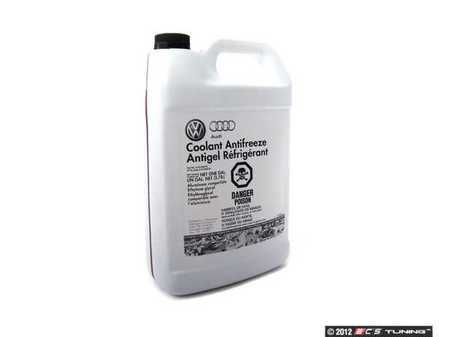

Be sure to maintain the correct coolant concentration for optimal engine health. On a regular basis, check your coolant pH.

Before putting it in your engine, you must dilute it using distilled water down to a 50/50 concentration. If you’d like to switch colors, flush the coolant system completely first before adding the new shade.Īpproved Volkswagen coolant comes in concentrated form. Use the same color that your vehicle already has if you’re topping up. Volkswagen coolant is always pink or purple in color. The exact kind that your particular model uses should be stamped on the expansion tank, as well as listed in the owner’s manual. Volkswagen uses a specific Audi/VW G13 or G12 approved antifreeze. Need a coolant flush? S chedule one at Quirk VW NH! If you need to change or top-off your VW engine coolant (or if the question simply popped into your mind), you’re likely wondering: what kind of coolant does Volkswagen use? You don’t want your VW to melt or freeze, do you? Keeping your coolant fresh is key to maintaining the temperature of your powertrain at a desirable level.

One of the fluids we hope you’re changing on a regular basis is engine coolant. Don't risk a plugged radiator or heater core on the hope a 'universal' antifreeze will work.We’ve said it before (probably), and we’ll say it again: changing fluids is a very important part of a healthy preventative maintenance routine. OAT and HOAT are SOMETIMES compatible, but there are not a lot of warm fuzzies between companies, so it's best to stick with the same stuff for a complete fill. The newer OAT(organic acid technology) and HOAT (Add Hybrid.) are designed with the aluminum cylinder heads in mind. DING! DING! DING! The WINNER!Įthylene Glycol (green or blue stuff0 has been around since the twentys and is designed for the cast iron blocks, heads and brass radiators. G-12 and the newer versions = A cylinder head that could be 100's of thousands of miles old and look brand new on the inside. It looks bad and the rust inhibits heat transfer. The green/ blue stuff = a very rusty looking cylinder head and block. We have seen the water jacket holes around the sealing part of the head gasket corrode to the point of head gasket failure. Along with that, the acids created by the diesel engine are corrosive to the aluminum. Straight water = Lots of hard water deposits inside the water jacket. We can see the difference in engines that have used straight water, green/ blue 'stuff' or the correct g-12, or any of the versions. It's easier to balance a system out for coolant ratio than to purge it for the wrong coolant type! Owners, STOP adding coolant in a pinch just add some Desani bottled water or even tap water if you must! G-12xx IS formulated to handle some amounts of minerals for this exact reason! coolant is not required for lubrication in a VW system, it's a cooling medium and water excels at this! if you are really in a pinch straight water works best!!!! ( you always have trapped coolant, it takes a lot of flushing with 100% water to have only water in the system). running coolant ratios of less than 60% coolant 40% water when servicing system using anything other than Reverse Osmosis or distilled water. adding anything other than HOAT coolant (additives, which are used in or called for in OAT coolants) mixing anything other than HOAT coolant Stop calling coolant by their "colors" Color NEVER correlates to coolant type, and the quickest way to fubar your cooling system. That's why the reservoir is replaced at 150,000 miles, these use G-05 or an OAT type coolant (yellow). MB uses an additive system located in the reservoir. OAT coolants require certain additives be added to the systems to provide tailored system requirements. VW coolants are HOAT types, the others are not.


 0 kommentar(er)
0 kommentar(er)
